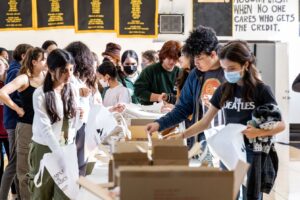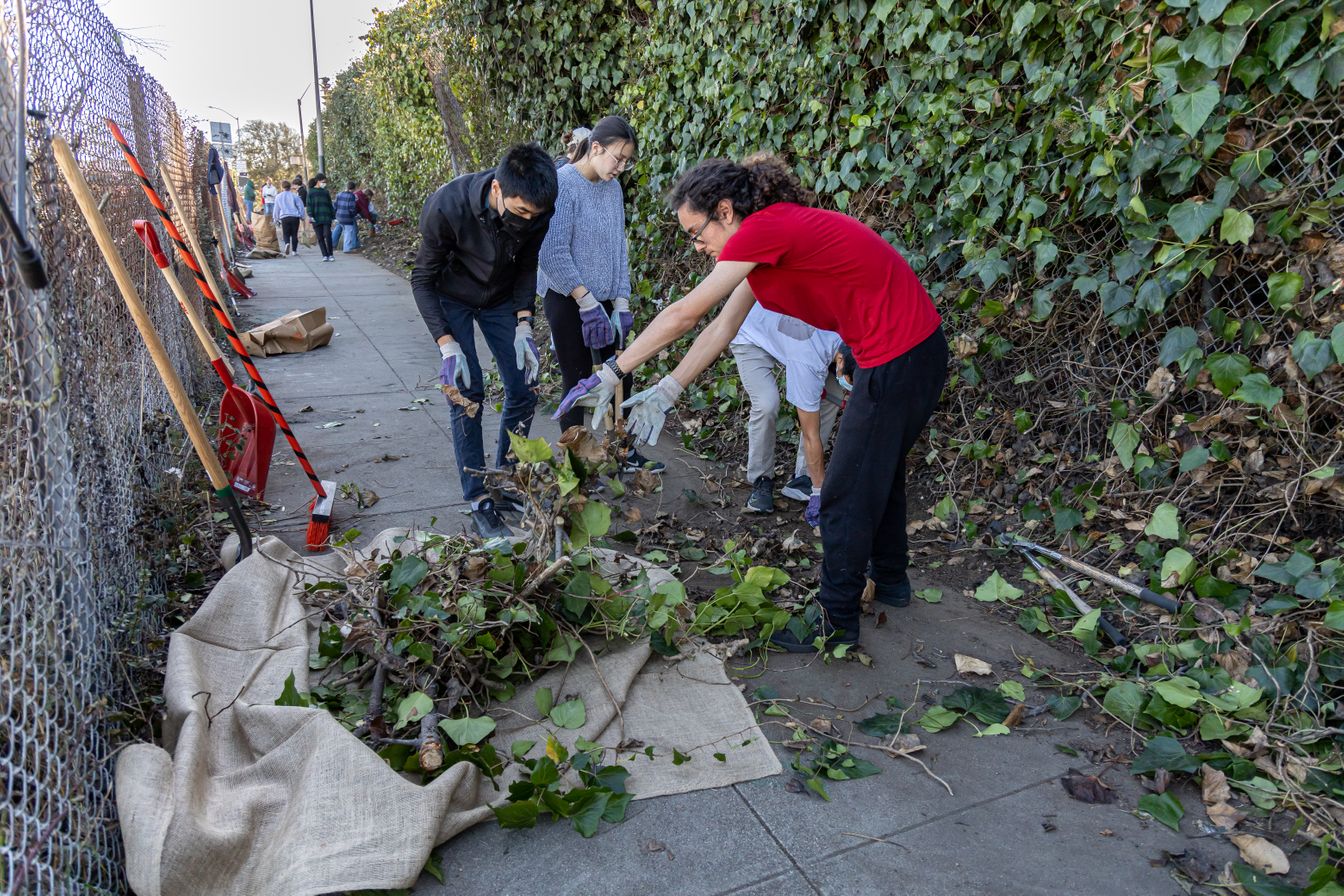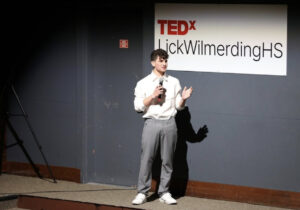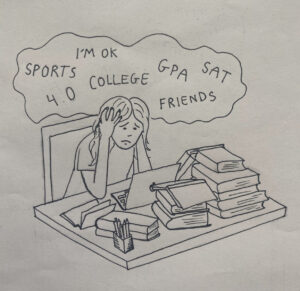Service learning has been an important part of Lick-Wilmerding High School since its founding. LWHS’s Public Purpose Program (PPP) was designed to help students engage with their communities to enact positive social change, and the current program has been in evolution for the last decade.
Christine Godinez-Jackson, Director of the Center for Civic Engagement which runs PPP, explained there are external and internal components to the program. The internal components are the requirements students must complete upon graduation and the external component is LWHS’s commitment to helping the public. Their community involvement includes allowing non-profits like Aim High to use the LWHS campus for free over the summer.
Previously the program was called Jellis Block, named after LWHS founder Jellis Wilmerding. It consisted of volunteering and service learning that happened through advisories. “It was supposed to be teacher-led experiential learning towards public purpose projects,” PPP Director Ravi Lau ’92 said. The event happened once a year, normally taking place over a week.
“It wasn’t necessarily tied to the school’s values or mission. It was more whatever teachers were interested in,” Lau said. Examples of events included trips to City Hall, a mural walk and a camping trip to learn about logging.
“We have always had the mission of being a private school with a public purpose, but it was very clear when I first joined the Center that there was only a small group that was actually doing service,” Godinez-Jackson said.
In 2018, Jellis Block was changed to the current PPP structure after a group of faculty led by Kate Wiley, LWHS dean of teaching an learning, spent two and a half years figuring out how to transform the program.
Currently, 9th graders participate in workshops during the eight designated PPP days, 10th graders complete 40 volunteer hours and 11th and 12th graders take a PPP class or complete an outside of school internship.
The PPP days, which are half-days, are also a time when volunteer opportunities are offered for sophomores and PPP classes can meet outside of class time. This year there have been eight PPP days, two in September, two in November, two in February and two in April. Faculty are also required to participate, either by teaching a PPP class or chaperoning a field trip.
“I think the concept of the program is a really great idea, because I think at an institution it’s very easy to get trapped in your bubble where everyone is privileged to go to a great institution,” Will Yu ’23 said. “I think the idea of education training you to go beyond your bubble and push yourself out of your comfort zone is super, super important.”

photo courtesy of Vidigami
Yu added that “the PPP education is meant to prepare you to go out in the world and make a difference because that’s our goal as humans.”
Another strength of the program is that LWHS has created a position in its administration whose sole purpose is to run the program, which Lau inhabits.
“There’s a lot of support if you take advantage of it,” Angelina Sorensen ’24 said. Though she noted that until now, that support from Lau about finding volunteer opportunities is not something that she had sought out. Sorensen explained that while resources like the Center Blog are available, they are not advertised so it can sometimes be challenging to take advantage of them.
“The Center Blog was posting opportunities, but it was hard to take in that information. It felt kind of unorganized,” Gigi Donohoe ’25 said.
There are also challenges that come with the PPP classes. Next year, there will be 25 PPP classes spread out across all the departments. “Sometimes I struggle to find the public purpose aspects ingrained into the classes, even if they are labeled as PPP classes,” Yu said. Although he is currently taking three PPP classes, he does not feel as though he is making a large impact in most of them. “I really appreciate the concept of ingraining public purpose work into normal academic classes, but sometimes it feels like it’s kind of forced, and it isn’t actually contributing to my learning as a student,” he said.
For Sorensen, taking a PPP class felt like a chore. She added that although she volunteers outside of school, with the Girls Scouts, her hours don’t fill the PPP requirement because it is not a specific internship or with an organization.
Mackenzie Gibson ’24 described an assignment in their Chinese 4 PPP class last year where students were tasked to go to Chinatown and make a video with $10 dollars. Gibson said that while some students went and got boba and recorded a video, they pushed their group to make a video about murals and go to an art museum. “You could really slack off in this PPP,” they said. “It was meaningful for me, because I made it meaningful for my group.”
Lau understands this is an issue with the current system. “It’s harder for some classes, to be able to figure out how to integrate something that’s with an outside community into a class, because you already have such limited time to go to your class.” He also pointed out the false assumption that rigorous learning must happen within the classroom. “I think it can be actually much more rigorous to take your academic learning and apply it out in the real world.”
Godinez-Jackson understands the challenges of some PPP classes, but she also mentioned how impactful and positive they can be. “I’ve heard students say that when it’s done well they want all their classes to be PPP because then it allows them to apply what they’re learning to the real world and give back,” she said.
With these challenges in mind, Lau is working to evolve the program. “I have my own ideas, but I can’t really make those changes by myself. It has to be in conversation with the whole school.”
Although he wants to reform the program, his intention is not to create something completely new. “I don’t want to build something that’s going to be another additional thing to try and fit into our already very busy world,” Lau said.
Additionally, he is including student and teacher input about the program. “That’s always been a key part of Lick, having student input and initiative, and so we want to find ways to have that be a part of the purpose program as well,” Lau said.
Lau hopes to strengthen existing partnerships with organizations that LWHS already has relationships with such as the Florence Fang Community Farm. Students in the Brain and Behavior PPP class and sophomores during PPP days go to the farm to volunteer.
Lau also hopes for teachers to attend workshops during the summer that include professional development to help teachers ingrain PPP in their curriculum. This is consistent with Lau’s goal to further integrate PPP into the school, rather than it being an additional program.
Godinez-Jackson also has ideas for possible changes to the program. She explained that students have suggested that the The Center add volunteer requirements for all grades. Also, the senior program would be a capstone for the four years of PPP. This senior program could debut in three years because as she said, “if you want to do it right, you have to be thoughtful.”
The evolution of PPP is something that students can look forward to as a way to further their involvement in local communities and understanding of their place in the world.






